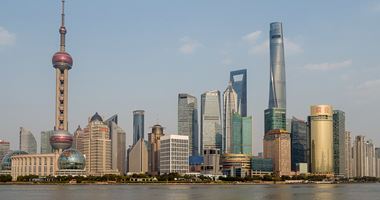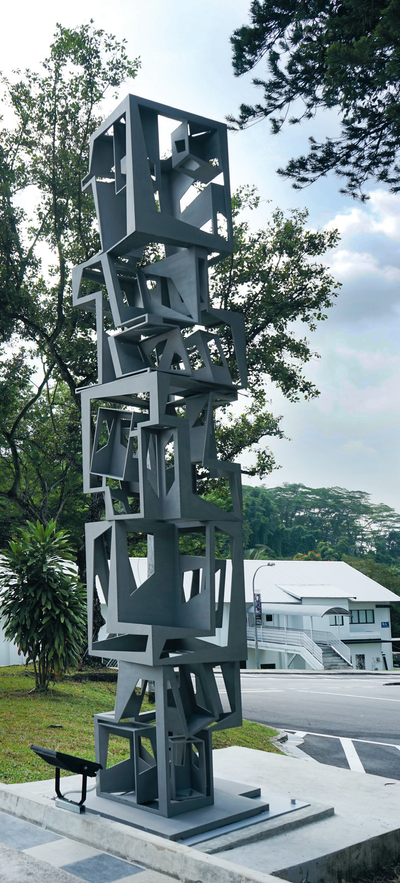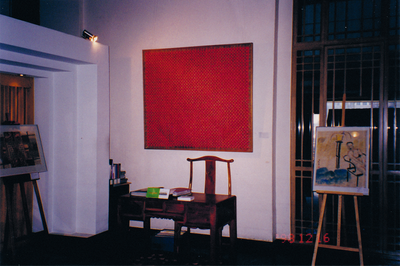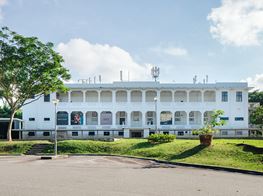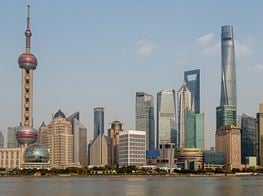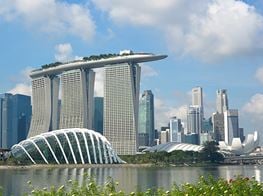Lorenz Helbling: Bringing Continuity to Art
IN PARTNERSHIP WITH GILLMAN BARRACKS
Installation view: Zhang Ding, Enter the Dragon, Project 7 Lock Road, ShanghART Gallery, Singapore (22–23 September 2016). Courtesy ShanghART Gallery, Shanghai/ Beijing/ Singapore.

Installation view: Zhang Ding, Enter the Dragon, Project 7 Lock Road, ShanghART Gallery, Singapore (22–23 September 2016). Courtesy ShanghART Gallery, Shanghai/ Beijing/ Singapore.
The list of credible galleries in China is short, and for many years there was only one entrant from Shanghai: ShanghART Gallery. Now, with the Shanghai scene growing at an impressive rate—it is already arguably the hub of China's art world—this gallery remains very much its centre.
For such an important platform, ShanghART's model is unique: it represents nearly every significant artist based in Shanghai, and yet remains the vision and domain of one man—Lorenz Helbling, the taciturn Swiss who founded the gallery in 1996 in a hotel, the Portman Shangri-La, Shanghai.
Beginning with an understanding of Shanghai as a quietly self-confident city with an awareness of its place within the world, he gradually built an audience for artists ranging from abstract painters Yu Youhan and Ding Yi (who was the subject of the gallery's first exhibition), through mid-career artists Zhou Tiehai and Yang Fudong, to young guns like Zhang Ding and Chen Wei.
Today, the gallery operates out of a newly built headquarters in Shanghai's West Bund, while continuing to stage exhibitions at the gallery's original space on Moganshan Road contemporary art district (M50), and from a branch in Singapore's Gillman Barracks, which specialises in building relationships with Southeast Asian artists like Robert Zhao Renhui and Apichatpong Weerasethakul.
Some museums that were here five years ago are gone now. We try to be reliable.
I would like to start by talking about your approach to the geography of ShanghART. Your idea of globalisation seems very different from that of most Chinese galleries. In working with artists, your first moves outside China were to Thailand and Singapore and, in opening spaces overseas, your first stop was Singapore. Where is your vision for this kind of international reach coming from?
My plan has always been one step at a time. It's not a big plan. We started here, in Shanghai, a city with good art and no galleries. We started locally, but we didn't want to be just a local gallery because so many local galleries disappear if they are not also working in an international context.
From Shanghai, we went to Beijing and, without thinking too much, the next step was Singapore, where Gillman Barracks perhaps looked similar to Moganshan Road.
We focus on Chinese artists, but if you look more closely, it's specifically artists based in Shanghai, artists close to where we are. I don't want to be a gallery for Chinese art. What I'm interested in is contemporary art, and this can be done in many places.
I'm here in Shanghai, and I think the art here is pretty interesting, pretty international, global in a way the people here are. Their focus is not just Shanghai, not just China, but is in relation to and informed by what's going on outside.
RPBut why at that point Singapore over Hong Kong, where everybody else was going?
LHMy feeling is that if you go to Hong Kong, you have to really approach it as a business because rent is always high. We have some artists who sell well and are quite famous, but in Hong Kong, we would be selling to pay rent. Singapore looked different, more like making something happen than setting up a business.
And Singapore is quite an interesting place where everybody is in-between—it's like Shanghai but more complex because you have the binaries of old-new, Indonesian old-new, East-West, Malaysian East-West, India—all these relationships trying to find their identity in this 21st-century environment.
RPYou spoke about ShanghART as being a gallery for Shanghai. Do you see the Singaporean gallery functioning in a similar way? Is it a kind of a place for a community of Singaporean artists?
LHIn Singapore, we didn't know exactly what we'd do. We work with Robert Zhao Renhui, but there's less of a scene there than there was when we started in Shanghai. At that time, we could get into the scene and grow with it. Singapore is more about individual artists. But if you look at the whole of Southeast Asia, it is getting interesting.
We started locally, but we didn't want to be just a local gallery because so many local galleries disappear if they are not also working in an international context.
RPReturning to Shanghai, the art world has changed quite a bit in the last few years as things have come together to make it a much more complex ecology of museums, large-scale collections, and different levels and types of galleries and artists. How do you see the role of ShanghART within that system? Has it changed at all?
LHSurely it has changed a little bit. At the beginning we were very close to the artists because nobody else was around. If you look at the West Bund area now, we are close to artists but we are also close to the museums and collectors. In the beginning, just hanging a few paintings was good enough. Now an exhibition has to be more.
In the beginning the gallery was just a very basic thing, a place people could show art, people could see art. We gave many artists their first shows, and big shows. Today museums do certain kinds of shows, which means we don't do them anymore.
If you look at the new West Bund space, it's even smaller than the Moganshan Road gallery. It was once the best physical space to show art; today, with the museums, there are better places. We did big Ding Yi and Yu Youhan shows in the gallery years ago, but now the museums are open to retrospectives.
RPWhat is the core function of the gallery now? Has it shifted to supporting a different generation of artists who haven't yet reached the museum stage, or is it home to a different type of exhibition?
LHWhat we have always done is to bring continuity to art, and that's the same today. We were always around, you could always find art at the gallery even when it was small, and there was always information around.
RPWhat do you mean by continuity?
LHSome museums that were here five years ago are gone now. We try to be reliable. Whether it is big or small is not so important, but you can come in here and even after 10 or 20 years, you can ask about an artist and we have information about this artist.
It doesn't disappear. I think we are more involved in education now than before. When we'd stage an exhibition, it then became the public's job to figure out what the art was about. Now we try to do more because we see where art is headed.
RPIt's interesting that you talk about continuity, because one of the things that marks the Shanghai system is these waves. Something will be big for a couple of years and then disappear and move on to the next model, so it's quite amazing that the gallery has been at the centre for that long.
It really means something just to be there and to keep the archive accessible. What does the gallery's headquartering from M50 to West Bund mean for the next couple of years? What will the space do differently that you couldn't before?
LHThe platform is much, much bigger in West Bund. At Moganshan Road, people can come and join in, but here that platform is bigger, more open, more public.
At Moganshan Road, our exhibitions have been a bit more casual, but here we do slower, fewer exhibitions and try to make them more or less perfect, and then we have a lot of activities around the exhibitions.
Before, everybody came to the opening and the following weeks were very quiet. Here, we try to keep people coming for two or three months, which we can do with the rooftop, the reading room and the screening spaces.
When ShanghART first began, collectors just wanted to try the best things of the country they were in.
RPWhen you set up a new space like this, how long do you imagine it working for? How long will this generation of the gallery last?
LHFive years.
RPDo you think that's a nice horizon to have? To always be thinking in a certain block of time?
LHNo, the ideal for me would be thinking about a place where there was no time limit, where you could really set up what you want to do for the long term, but here it's a place in time.
RPWhat would be different about the gallery if you were approaching it that way?
LHWhen we moved into West Bund, we tried to make it look like a long-term setup, but it's a container building, so it also has a temporary nature. Knowing that it's here for a certain time, we know the limits of the resources we can spend here. We would like to think about showing artworks permanently here, so the place could grow and the art would remain. Long-term thinking is different. It is also a dream to have our storage visible on site.
RPI also want to ask about the recent sale of work from the Ullens Collection at Poly Auction, which of course featured work from your artists.
Many works by Chinese artists that previously belonged to this important European collection were picked up by five or six upcoming Chinese collectors of a younger generation. Does this signal a shift in who the most significant collectors of Chinese art are?
LHOf course, it's a big change. When Ullens started to sell his collection, that was the beginning of a new time. Ullens was very important for the gallery. He came every few months and bought a few works, and helped the gallery survive at the beginning.
Back then you had three or four visitors a year who came to buy, with different motivations and reasons, but they all made it possible. Today the collectors have changed but also the meaning of the gallery has changed.
When ShanghART first began, collectors just wanted to try the best things of the country they were in, but they weren't really interested to figure out what's going on, or what this art could tell them. But somebody had to collect it before it disappeared.
For the next 10 or 20 years, it will be about trying to figure out why this art could be interesting or what this art tells the public.
RPSo you think there's more of an intellectual approach to collecting now?
LHThere should be, yes. People know more. The first time someone bought a Ding Yi, they only knew his name, but now after following for 10 or 20 years, they have a sense of what he has been doing. It's a totally different discussion, and much more interesting.
RPWhat can you say about working with collectors out of the Singapore gallery? Is it more institutional?
LHIt brings new people, new faces. For us it is about people from the region, and young people. In Shanghai we met the first collectors in the country, and they have grown to build major collections, and now we are meeting another generation of collectors who have the same feeling that we do.
Slowly, through Singapore, we get to know them throughout Southeast Asia too. Actually, I think writing has become much more important, although nobody reads. In the beginning it was not necessary to read anything because most of the writers were lagging behind the artists, however this has changed.—[O]



